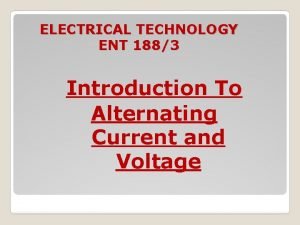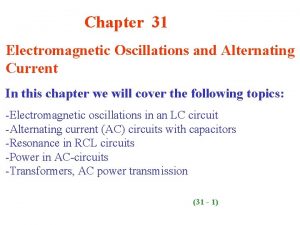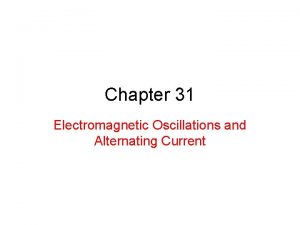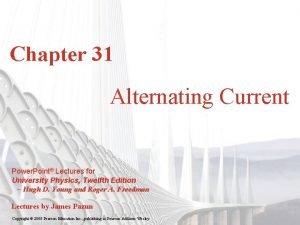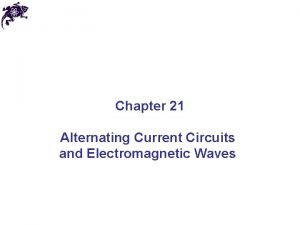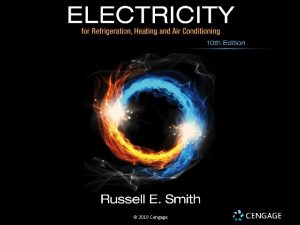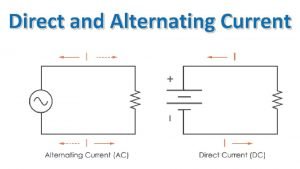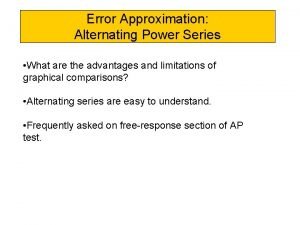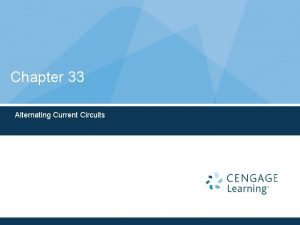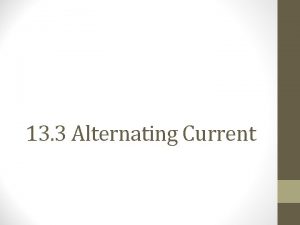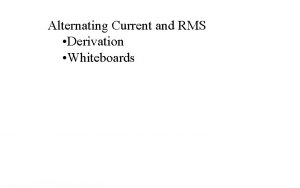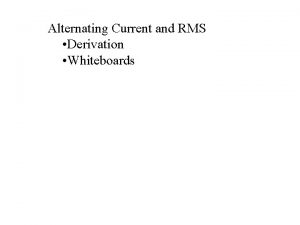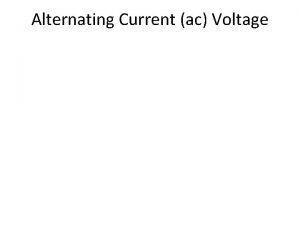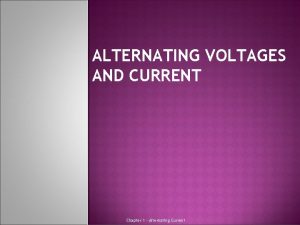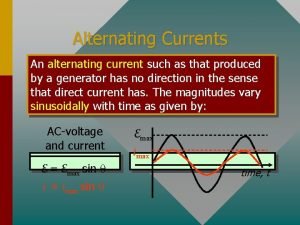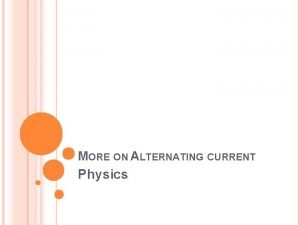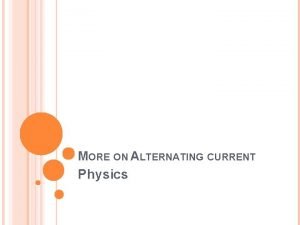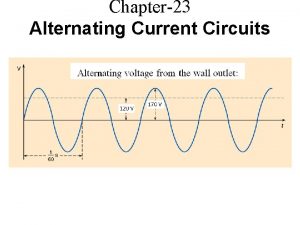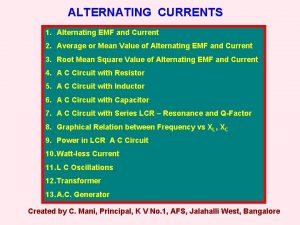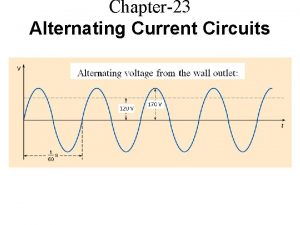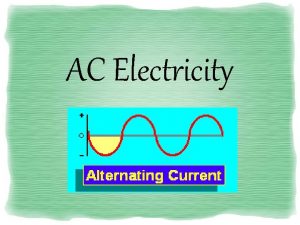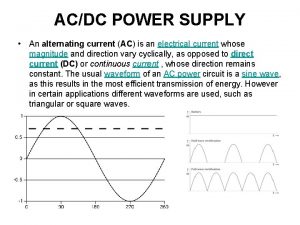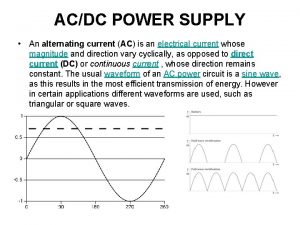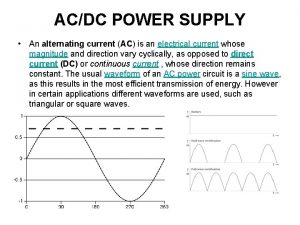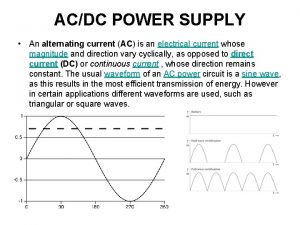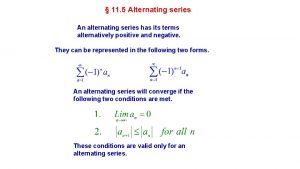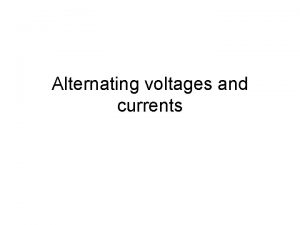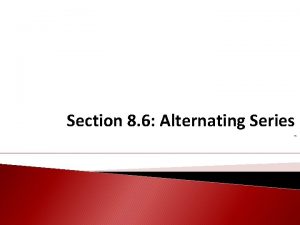Power supply Introduction Power supply convert alternating current





























- Slides: 29

Power supply

Introduction • Power supply convert alternating current to the direct (DC) current mainly convert 110 -240 v AC • Three types of power supply: – – Linear power supply Switched mode (SMPS Uninterrupted (UPS) power SMPS stands for Switch Mode Power Supply. • This receives 230 V AC and translates it into different DC levels such as +5 V, -5 V, +12 V, -12 V.

Linear power supply • Linear power supply: transformer is used to convert voltage. • Transformer convert the line AC voltage to a smaller peak voltage • Rectifies AC signal produces large waveforms , capacitor filter is used filter the rectified wave which contain small pulses (ripple).

Linear power supply • Depend on requirements regulator adjust the output voltage • Good line and load regulation lower output voltage ripples.

Linear power supply

Operation • The power supplies used in computers are switched mode power supplies. • The primary power received from AC mains is rectified and filtered as high-voltage DC.

SMPS

SMPS • Switched mode : electronic power supply with switching regulator. • power SMPS stands for Switch Mode Power Supply. – This receives 230 V AC and translates it into different DC levels such as +5 V, -5 V, +12 V, -12 V. • it is switched to a high frequency approximately 10 to 100 KHz by a bipolar transistor and fed to the primary side (P) of a stepdown transformer. • Uses feedback mechanism

SMPS schematic diagram

SMPS working • Convert AC to DC voltage with rectifier • Which is unregulated DC voltage sent it to filter • Inverter convert DC to AC with help of power oscillator. • Output transformer inverts AC voltage up to down to the required output level. • Output rectifier and filter : AC output from transformer is rectified. • For lower voltage uses silicon/schottky diodes used and smoothing the rectified output by using filter.

SMPS working This reduces the amount of the voltage passed through the transformer. • So the output voltage will be maintained normally. • Then it is sent to the output of the power supply. • A sample of this output is sent back as feedback signal for regulation.

AT and ATX power supply PC using XT, AT, baby. AT and LPX form factor uses switch to turn on the computer. Newer versions of motherboard send signals through motherboard to power supply. – ATX/NLX

AT type SMPS Front side power connector to SMPS AT style SMPS provides DC output on two 6 -pin connectors(carries DC power to motherboard) and two 4 -pin connectors Power good flag is set output voltage stable

AT type SMPS

ATX/NLX type SMPS Doesn't connect directly to power button It uses five DC voltage , 20 pin connector. – PS-ON: when it is low SMPS is ON or else OFF. – 5 VSB: supplies power supply to circuits – PW-OK: power good signal. Front side power connector to SMPS AT style SMPS provides DC output on two 6 -pin connectors(carries DC power to motherboard) and two 4 -pin connectors

ATX/NLX type SMPS

Power Supply Characteristic Wattage: The total, maximum output of the power supply in watts, Typical power ranges are from 200 W to 500 W. Efficiency : Efficiency=Useful Power Output / Total Electrical Power Consume. Regulation : The ability of a SMPS to maintain an output voltage within specified limits under varying of input voltage.

Power Supply Characteristic Ripple : Also called AC Ripple or Periodic and Random Deviation(PARD) or simply Noise the Power Supply of course produces DC outputs from AC input. Load Regulation: Sometimes called voltage load regulation. This specification refers to the ability of the power supply to control the output voltage level Line Regulation: The complement of load regulation, this parameter describes the ability of the power supply to control its output levels

Power Supply problems Blackouts: it is complete loss of electric power where voltage and current drop to 0, usually caused by physical interruption in the power line due to accidental damage by a person or act of nature, loss of AC will invariably shutdown the computer, loss of data, reduction productivity, corrupt file structure and damage files.

ATX/NLX type SMPS

Power Supply problems Blackouts: it is complete loss of electric power where voltage and current drop to 0, usually caused by physical interruption in the power line due to accidental damage by a person or act of nature, loss of AC will invariably shutdown the computer, loss of data, reduction productivity, corrupt file structure and damage files. Brownouts (Sag): The under voltage condition The high load items like air conditioners, welding machine, motor etc draw to much current that the AC voltage level drops. power supply will fall out which resulting in intermittent system operation. file may be lost or corrupted on the hard drive.

Power Supply problems Surge: small over voltage conditions that take place over relatively long periods and regulate power to a desired level excess energy must be switched (in SMPS). Spikes: A spike is a large over voltage condition that occurs in the milliseconds. high energy switches can cause spikes on the AC line. Example equipment like drill machine, grinders, welding equipment etc. can produce power spikes.

Symptoms Supply problems 1. Flickering Lights, 2. Premature Component Failure, 3. Hard Drive Crashes, 4. The PC stalls, crashes, or reboots for no apparent reason. 5. You suffer chronic or frequent hard drive failures or file access problems. 6. The CMOS RAM or modem NVRAM periodically looses its contents or becomes corrupted. 7. The PC behaves erratically when other high-energy devices are turned on. 8. The modem regularly looses its connection, or fails data transfers. 9. The monitor display flickers or waves.

Protection Devices To run a computer system properly requires a steady power supply with clean and noise free power.

Protection Devices Surge Suppressor: simple and relatively inexpensive devices, designed to absorb high-voltage transients produced by lightning and other high-energy equipment. Device inserted in AC to avoid spikes. Avoids peak AC voltage. Protection is accomplished by clamping (or shunting) voltages above a certain level (usually above 200 volts). Metal oxide varistor, or MOV, diverts the extra voltage. Circuit Breaker: Its purpose was to protect lighting circuit wiring from accidental short-circuits and overloads.

Protection Devices Circuit Breaker: Its purpose was to protect lighting circuit wiring from accidental short-circuits and overloads. CB can be reset to function normal.

Protection Devices Circuit Breaker: 1. actuator lever: trip/reset 2 actuator mechanism 3. Contacts: allow current 6 calibration screw:

Uninterrupted Power Supply (UPS) An UPS provides a back up power supply when there is a power failure from AC mains.

Uninterrupted Power Supply (UPS) On-line UPS.
 Alternating current introduction
Alternating current introduction Ac dc graph
Ac dc graph Electromagnetic oscillations and alternating current
Electromagnetic oscillations and alternating current Electromagnetic oscillations and alternating current
Electromagnetic oscillations and alternating current Alternating current ppt
Alternating current ppt Alternating current circuits and electromagnetic waves
Alternating current circuits and electromagnetic waves Chapter 7 alternating current
Chapter 7 alternating current A psu converts alternating current to what
A psu converts alternating current to what Electric generator direct
Electric generator direct Direct and alternating current
Direct and alternating current Power series
Power series Line current and phase current
Line current and phase current Phase to phase voltage
Phase to phase voltage N=nc exp(-eg/2kt)
N=nc exp(-eg/2kt) Ac systems lesson 4
Ac systems lesson 4 Drift vs diffusion current
Drift vs diffusion current Drift current and diffusion current in semiconductor
Drift current and diffusion current in semiconductor Gm formula for mosfet
Gm formula for mosfet Wye and delta connections
Wye and delta connections Infineon
Infineon Drift current density unit
Drift current density unit In alternators the welding current is produced on the
In alternators the welding current is produced on the Hazard based safety engineering
Hazard based safety engineering Mesh current method with current source
Mesh current method with current source Flex power power supply
Flex power power supply How to start a comparison essay
How to start a comparison essay Latent strabismus
Latent strabismus Esophoria
Esophoria Michelle benjamin phd
Michelle benjamin phd Maddox rod test procedure
Maddox rod test procedure
